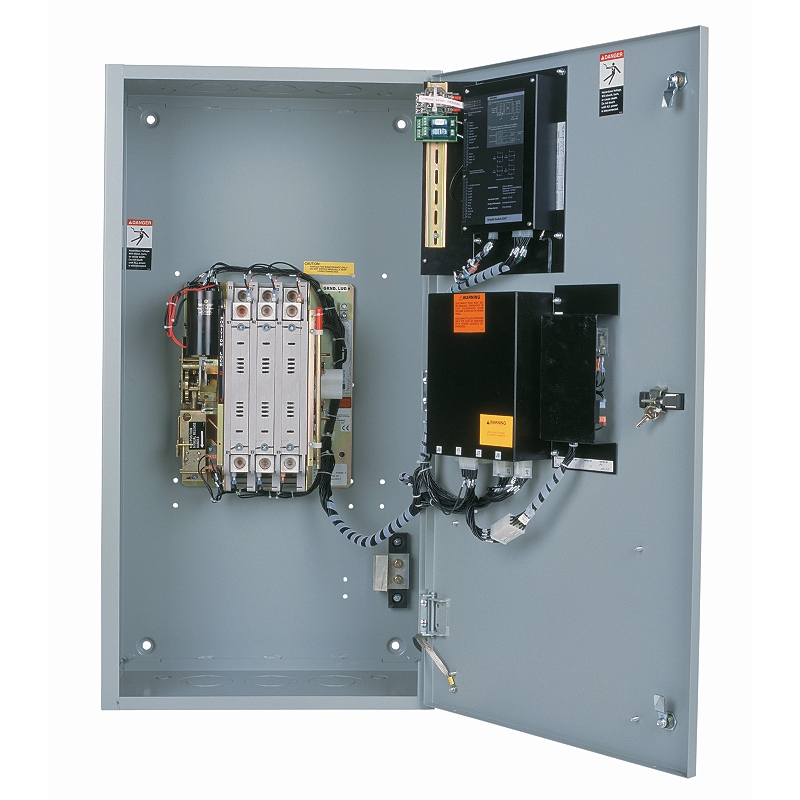Standard
Codes and Standards: NFPA 0,99, 101,110,NEC 517,700,701,702,IEEE 446, 241,NEMA ICS2-447
CSA C22.2 No. 178 listed through 600 VAC
Quality System:
ISO 9001 Registered
UL 1008 listed through 480 VAC
Controls tested in accordance with:
Equipment (Controls and Power Section)Seismic Test Qualified to:
IBC-2003
IEEE-693-2005
Enclosures meet the requirements of:
UL 508, UL 50, ICS 6, ANSI C33.76 and NEMA 250
IEC 947-6-1 listed through 480 VAC
This ruggedly built family of power contactor switches has been specifically designed for transfer switch duty with dependability, versatility and user friendliness of prime concern.
The CTS power panel components, consisting of power switching contacts, drive mechanism and terminal lugs, are mounted on a specially formed backplane. Logic devices including microprocessor control auxiliary time delays and special accessory equipment are assembled on the door for ease of maintenance and separation from the power section. They are connected with a numbered wiring harness equipped with a disconnect plug that allows isolation of the control panel for maintenance.


